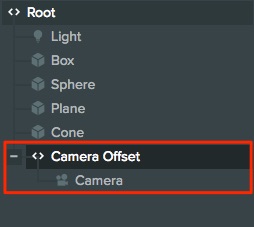Using WebXR in PlayCanvas
Support of WebXR
Browser support for WebXR is not (yet) universal. It can be checked as follows:
if (app.xr.supported) {
// WebXR is supported
}
Starting XR Session
The API for entering XR is on the Camera Component or XrManager on the Application. To start VR presenting
you should use the startXr method on a CameraComponent and provide type of XR session, reference space and optional object with
additional arguments:
entity.camera.startXr(pc.XRTYPE_VR, pc.XRSPACE_LOCALFLOOR);
It is an asynchronous operation and is only possible to start on a user interaction, such as a button click, mouse click or touch. To know when a
session is started, you can subscribe to the start event:
app.xr.on('start', function () {
// XR session has started
});
Session type or reference space might not be available on a particular platform, so it will fail to start the session, providing an error in a
callback and firing the error event on XrManager:
entity.camera.startXr(pc.XRTYPE_VR, pc.XRSPACE_UNBOUNDED, {
callback: function(err) {
if (err) {
// failed to start session
}
}
});
Ending XR Session
Exiting XR can be triggered in various ways. You can trigger an exit of XR from code:
app.xr.end();
Also, the user might exit XR via some external process like the back button in the browser. XrManager will
fire events associated with session end:
app.xr.on('end', function () {
// XR session has ended
});
Types of XR
Each platform can support different types of sessions. These are:
- VR (Virtual Reality) - Provides some level of viewer tracking and it provides exclusive access to XR Device. This means that the application will be rendered onto a device's frame buffer and not the HTML canvas element.
- AR (Augmented Reality) - This type of session provides exclusive access to the XR Device and content is meant to be blended with the real-world environment. In this mode, the camera clear color should be transparent.
The availability of a session type can change during an application's life-time, based on devices being plugged in or features on devices being enabled. To check if a session type is available do:
if (app.xr.isAvailable(pc.XRTYPE_VR)) {
// VR is available
}
And you can subscribe to availability change events too:
app.xr.on('available', function (type, available) {
console.log('XR session', type, 'type is now', available ? 'available' : 'unavailable');
});
// or specific session type
app.xr.on('available:' + pc.XRTYPE_VR, function (available) {
console.log('XR session VR type is now', available ? 'available' : 'unavailable');
});
Camera Position and Orientation in XR
When you are presenting in XR, the position and orientation of the camera are overwritten by data from the XR session. If you want to implement additional movement and rotation of camera, you should add a parent entity to your camera and apply your manipulations to that entity.

Input source ray, as well as position and rotation of grip and hands, provided in world space.
Why can't I enable XR mode automatically?
Entering WebXR is required by browsers to be triggered by a user action. That means that it must be in response to a key press, a mouse click or a touch event. For that reason there is no way to enter XR immediately on loading a page.
Experimental features
WebXR API is constantly evolving and additional APIs get released extending XR feature set. While engine is constantly updated with integrations
for XR APIs, some of the features might come with delay. For developers willing to experiment with new features, it is possible to enable them
by passing relevant optionalFeatures flags. Bear in mind: accessing an internal undocumented APIs is a subject to engine
changes that are not guaranteed to be backwards compatible. Here is an example of enabling experimental API for WebXR Layers:
app.xr.start(cameraComponent, pc.XRTYPE_VR, pc.XRSPACE_LOCAL, {
optionalFeatures: [ 'layers' ],
callback: function(err) {
if (err) {
console.log(err);
return;
}
if (app.xr.session.renderState.layers) {
// get access to WebXR Layers
}
}
});